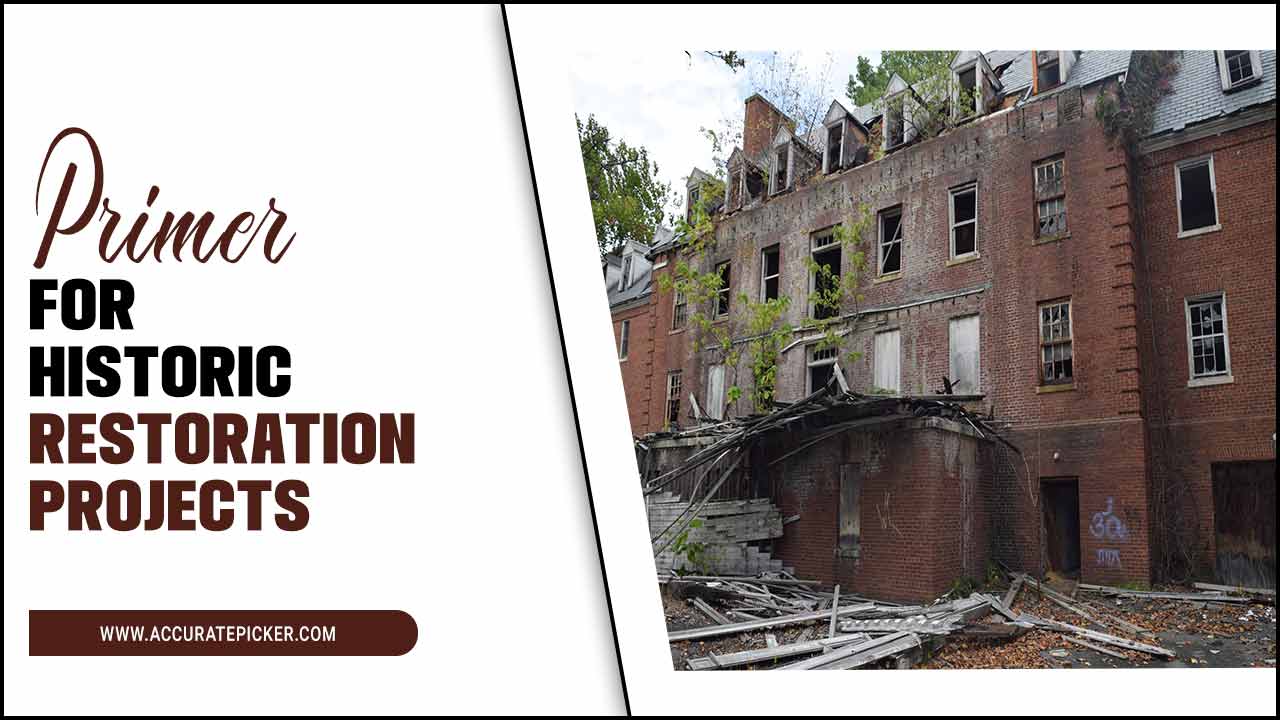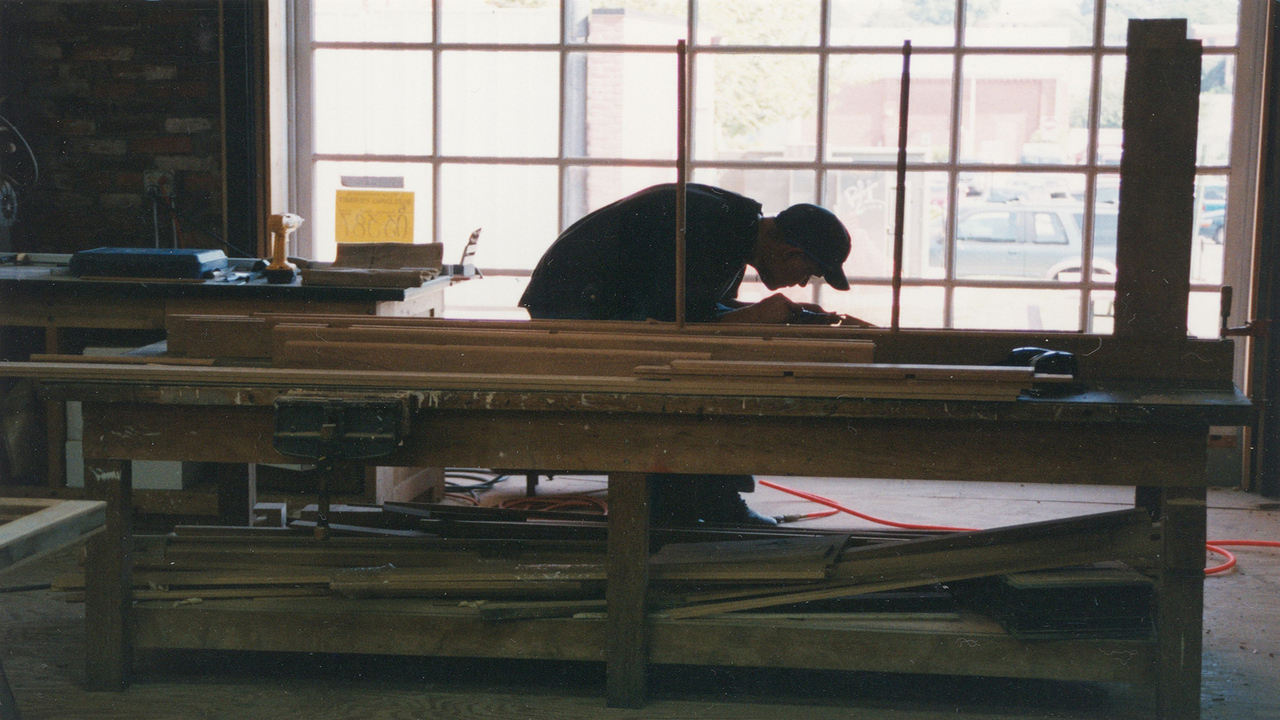The process of historic restoration can seem daunting and overwhelming. However, with the right primer, it can be an enjoyable and rewarding experience.
This article will provide an overview of the fundamentals of historic restoration, from understanding the importance of preserving historical monuments to the technical aspects of the process. It will also delve into the challenges and rewards of restoring a piece of history, and provide guidance on how to begin the process.
With this primer, readers will gain a better understanding of the complexities and nuances of historic restoration, and be equipped to embark on their own restoration journey. So, if you are keen to learn more about the art of historic restoration, read on for an insightful journey into the world of preserving and restoring the past.

A Primer For Historic Restoration

This article offers a primer for historic restoration. It provides an overview of the process, from the initial assessment of the building to the final stages of the project. It covers the key elements of the process, such as the selection of appropriate materials, the use of traditional methods, and the importance of adhering to local building codes.
It also offers advice on how to work with local authorities and other stakeholders to ensure a successful restoration project. Finally, the article provides an overview of the benefits of historic restoration, from preserving the cultural heritage of a site to increasing its value and appeal.
Definition

Historic restoration is the process of returning a structure or object to its former condition. This process is often used for buildings, monuments, artwork, and other historical artifacts. The goal of historic restoration is to preserve as much of the original material as possible and to accurately recreate any parts that were lost or damaged over time.
In addition, historic restoration can also involve updating the structure or object with modern amenities. This helps to ensure that the structure or object is both safe and enjoyable to use. Historic restoration projects must be completed with great attention to detail and accuracy in order to be successful.
What Is Restoration?
Restoration is the process of returning a building or object to a state that is as close as possible to its original appearance. This may involve the use of original materials, or materials that match the originals as closely as possible.
Restoration may also involve the careful removal of paint or other materials from the original structure to reveal its original features. Restoration projects often take great care to ensure that the original structure is preserved while still bringing improvements to it. The scope of the restoration project will depend on the individual building and its needs.
Different Types Of Restoration
Historic restoration is a complex and intricate process. It involves the preservation, conservation, and repair of historic buildings and structures. Different types of restoration can be used to bring a building or structure back to its original condition.
The most common types of restoration include structural restoration, architectural restoration, and conservation restoration. Structural restoration is used to restore the structural integrity of a building or structure, while architectural restoration focuses on restoring the original design.
Conservation restoration is used to preserve the original material and craftsmanship of a structure. Additionally, historic restorations may involve restoring elements such as paint, fixtures, and roofing. Ultimately, the restoration process is tailored to the unique needs of a building or structure and requires the expertise of experienced professionals.
Adaptive Vs. Authentic Restoration
When it comes to historic restoration, two approaches exist: adaptive and authentic. Adaptive restoration focuses on maintaining the historic context of a building while making necessary changes to suit the modern needs of the building’s inhabitants.
Authentic restoration is the attempt to recreate a structure as authentically as possible, often using original building materials. Adaptive restoration is the more commonly used method, as it allows for the structure to be preserved while still serving its intended purpose.
This approach is also the more cost-effective option, as it typically requires fewer materials and labor. Authentic restoration, on the other hand, is more expensive and labor-intensive. However, it is often seen as the more desirable approach, as it allows for the building to retain its original character.
When it comes to making a decision about which type of restoration to pursue, it is important to consider the specific needs of the building and its inhabitants. Both adaptive and authentic restoration have their advantages and disadvantages, and the right decision should be determined on a case-by-case basis.
Ultimately, it is important to make sure that the historic character of the building is preserved, no matter which approach is taken.
Benefits Of Historic Preservation
Historic preservation is a great way to help protect the built environment and its cultural heritage. It involves the conservation, restoration, and adaptive reuse of historically and culturally significant structures.
Such activities can help to create more resilient communities, contribute to economic development, and support environmental sustainability. In addition, they can provide opportunities for education, recreation, and tourism.
The benefits of historic preservation extend beyond the physical and cultural realm, as it can also help to foster a sense of identity, pride, and belonging. Preservation efforts can help to create a sense of place and a shared history among the people of a community, connecting them to their past and providing a source of inspiration for the future.
Process

Historic restoration is an important process of preserving the past. It involves careful research of the original structure, materials, and finishes so that the restoration looks as close to the original as possible. It may also involve the use of specialized techniques, such as reverse engineering, to recreate the original structure.
The restoration process also includes the use of appropriate materials and methods for the age of the structure, such as using appropriate glues, nails, and paints. Finally, the restoration may also include the use of historically accurate details, such as hand-carved woodwork or metalwork.
It is essential that all steps of the restoration process be completed with the utmost care and attention to detail in order to ensure the best possible results.
Research
Conducting research is an important part of historic restoration. Knowing the original architecture of a building or structure can provide invaluable insight into the best preservation practices. Before beginning restoration, it is important to research the building’s history and purpose.
Understanding the original construction materials and techniques used can help guide decisions on how to best restore the structure. It is highly recommended to consult with architectural historians, local historians, and other experts to gain a deeper understanding of the building’s history.
For example, if the building is a part of a historic district, there may be regulations in place that should be considered. Local records and archives can provide insight into the history of the building, such as when it was built, by whom, and what changes have been made over time.
In addition to consulting experts, it can be helpful to visit nearby buildings of similar age and style that have been preserved. Seeing firsthand how similar structures have been restored can be a useful source of inspiration. Finally, be sure to document all your research with photographs, diagrams, and notes. This can be useful when presenting to stakeholders or applying for grants.
Planning
Planning is an essential part of any historic restoration project. Before beginning work, it is important to create a clear plan for the project. This should include a timeline, budget, and materials list. Additionally, it is important to understand local laws and regulations governing historic restoration projects.
If necessary, consult with an expert to ensure that the project is being completed in compliance with all applicable laws. Lastly, it is important to create a plan for the disposal of any materials removed from the property during the restoration process. With a detailed plan in place, the restoration can proceed with confidence.
Execution
Execution is the most important part of historic restoration. It is the process of bringing the project from concept to completion. This requires a thorough understanding of the building’s history and a precise plan of action.
It is essential to identify and manage all aspects of the restoration, from the design and construction, to the implementation of the materials and finishes. Professional contractors should be consulted to ensure that the work is completed to the highest standards.
Furthermore, the project should be documented and tracked to ensure that the restoration is completed in a timely and efficient manner. Ultimately, the goal of historic restoration is to preserve and protect the building, while honoring its history and legacy.
Evaluation
Evaluation is an important step in historic restoration. It involves the assessment of the current condition of a historic structure, including the building materials, construction techniques, and any alterations that may have been made in the past. The evaluation process helps to identify any areas of concern and to determine what repairs and restorations are needed.
This process should include an inspection of the structure, a review of historical records of the structure, and an assessment of any potential risks that could affect the project. By thoroughly evaluating a structure, a historic restoration project can be undertaken with the greatest level of success.
Regulations
Historic restoration projects are subject to regulations that are designed to protect the integrity of the building being restored. Depending on the building’s age, location, and heritage, there may be local, state, and federal regulations that must be followed. Before beginning a historic restoration project, research the regulations that must be adhered to.
Be sure to also understand any permitting that may be required and any additional actions that must be taken to bring the project into compliance. The time it takes to complete the research can vary greatly based on the scope of the project, so it is important to plan ahead.
Federal Laws
Federal laws play an important role in historic restoration projects. The National Historic Preservation Act of 1966 is a federal law that requires the Secretary of the Interior to establish a list of properties that are considered to be of national historic significance. The law also requires federal agencies to consider the effects of their actions on any properties that are listed in the National Register of Historic Places. The U.
S. Environmental Protection Agency provides financial assistance to state and local governments to help them protect and restore historic properties. The EPA also provides grants to non-profit organizations for the purpose of restoring and preserving historic properties.
The National Park Service provides technical assistance and training to local governments and organizations on historic preservation. It also provides grants to states and local governments for historic preservation projects. Other federal laws, such as the Clean Air Act and the Clean Water Act, can also affect projects involving historic preservation.
State Laws
State laws regarding historic preservation vary by location, but all have the same goal: to protect and preserve historic buildings. Generally, these laws are designed to protect buildings regardless of their age or architectural style.
In some cases, state laws may require that a building be preserved in its original state, while in others, they may allow for some alterations or renovations to be made. To ensure that all applicable laws are followed, property owners should consult their local building authority before embarking on any renovations or restoration projects.
Historic preservation laws can be a great way to ensure a building’s historical integrity is maintained, and can be a great way to protect a building for future generations.
Local Laws
When embarking on a historic restoration project, it is important to familiarize yourself with local laws and regulations. These laws vary from state to state, but generally include rules regarding the alteration of historic buildings and sites. In some cases, local historic preservation organizations may also be involved in the approval process. Therefore, it is essential to research the specific laws and regulations for your project before beginning any work.
Additionally, it is important to be aware of any potential zoning or building code restrictions in the area. Adhering to all applicable laws and regulations will ensure a successful restoration project.
Tax Incentives
Tax incentives for historic restoration can be an important part of the financial planning for a project. Depending on the area, the federal government, a state, or a local municipality may offer tax credits or deductions to encourage the preservation of historic buildings.
It is important to research the incentives available for a particular project. Generally, the incentives are given for projects that maintain the historic character of the building while improving its functionality.
For instance, energy efficient updates may qualify. Additionally, the incentives may also cover expenses related to research, planning, and design. Last, some incentives are given for renovations that are not related to the structure but that bring the building into compliance with current codes and regulations.
Conclusion
This article provides an overview of the process of historic restoration. It explains the importance of research and documentation, as well as the various techniques used to restore historic buildings and sites.
It also outlines the benefits of historic restoration, such as preserving the cultural and architectural heritage of a community, and the potential economic benefits. Finally, it provides tips on how to get started with a historic restoration project.
FAQ’s
1.What Techniques Can Be Used For Historic Restoration?
Ans: Techniques for historic restoration can vary depending on the type of material and its condition. Generally speaking, the goal of historic restoration is to preserve original material as much as possible, while repairing any damage.
This can be achieved through conservation and preservation techniques, such as stabilizing and cleaning existing material, as well as repairing and replacing damaged material with historically accurate material. Additionally, historic structures may require structural repairs and stabilization.
2.What Materials Are Best Suited For Historic Restoration?
Ans: The best materials to use for historic restoration are those that are authentic to the period being restored. For example, if restoring a 19th century house, original materials such as brick, stone, wood, and glass should be used.
It is also important to use traditional methods of construction when possible to ensure the integrity of the restoration. Additionally, modern materials can be used, as long as they do not detract from the historic character of the building.
3.What Important Considerations Should Be Taken When Restoring A Historic Building?
Ans: When restoring a historic building, it is important to consider the original design and materials and adhere to any relevant preservation regulations. Research should be undertaken to ensure that the restoration is accurate and to determine what parts of the building are original and what are later additions.
The restoration should aim to preserve the building’s character and should be done in a way that is sympathetic to the original structure. Sustainability should also be taken into account, with the use of eco-friendly materials and techniques wherever possible.
4.What Skills Are Needed To Do A Historic Restoration?
Ans: Historic restoration requires a variety of skills, including carpentry, woodworking, stonemasonry, metalworking, electrical, plumbing, and painting. It also requires an understanding of historic construction methods, materials, and design, as well as knowledge of local building codes and zoning regulations.
Research skills are also essential, in order to accurately assess the original design and materials used. Additionally, project management skills help to ensure the smooth and successful completion of the restoration project.
5.How Can Historic Restoration Help Preserve Our Cultural Heritage?
Ans: Historic restoration helps preserve our cultural heritage by restoring and conserving buildings and other structures of historical or cultural significance. This includes restoring architecture, artwork, and artifacts to their original condition using traditional techniques and materials.
By preserving these structures, we can get a better understanding of our history and culture, as well as helping to maintain the unique character of an area. Historic restoration also serves to protect our cultural heritage from being lost due to natural disasters, vandalism, and other forms of destruction.





